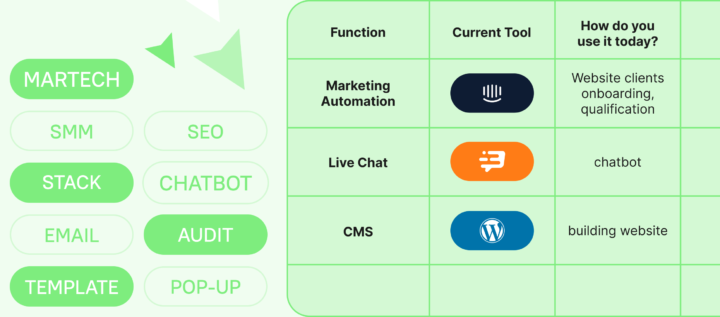Finding the right Customer Experience Management companies: A comprehensive guide to fit your needs

Overview
This article addresses a common challenge faced by many small business owners: finding the right customer experience management (CXM) companies that truly align with their unique business needs and objectives. We understand that navigating the myriad of options can feel overwhelming. It’s essential to recognize the different types of CXM providers available, each offering distinct services tailored to enhance client satisfaction.
By focusing on key factors such as technology compatibility, scalability, and customization, you can significantly improve your business’s success. These elements are not just technical details; they are the building blocks that can help you create a more satisfying experience for your clients. Remember, the right CXM partner can make all the difference in your journey toward achieving your business goals.
We get it — finding the perfect fit isn’t easy, but it’s a crucial step toward ensuring your business thrives. As you explore your options, keep in mind that the right provider will not only understand your challenges but also offer solutions that feel practical and supportive. You’re not alone in this; many have walked this path before you and found success by making informed choices.
Introduction
In today’s competitive business landscape, we understand that managing customer experiences can feel overwhelming. Customer Experience Management (CXM) has become a vital strategy for success, especially as you strive to meet the constantly changing expectations of your customers. It’s essential to grasp and enhance customer interactions throughout their journey. With so many consumers now turning to mobile devices for their purchases, prioritizing CXM not only boosts customer satisfaction but also nurtures loyalty and advocacy.
This article will explore the many aspects of CXM, from selecting the right provider to utilizing innovative technology. We’ll emphasize the importance of continuous improvement in building lasting customer relationships. As you navigate this complex environment, the insights shared here will guide you toward achieving sustainable growth and success in the dynamic marketplace of 2025. Remember, you’re not alone in this journey — we’re here to help you every step of the way.
Understanding Customer Experience Management: A key to business success
Experience Management (CXM) encompasses the strategies and technologies that organizations rely on to navigate interactions throughout their lifecycle. The primary goal here is to enhance client satisfaction, loyalty, and advocacy. In today’s marketplace, where nearly 60% of Canadians are turning to mobile devices for online purchases, optimizing portals for mobile is not just important; it’s essential.
As businesses compete for attention, those that prioritize customer experience management are set up for greater success. These companies are equipped to meet evolving client expectations and build lasting relationships. Effective CXM hinges on a deep understanding of client needs, preferences, and behaviors, enabling organizations to personalize their offerings and interactions. As HubSpot aptly puts it,
Speed is essential in today’s fast-paced world, with 90% of consumers valuing immediate responses to their inquiries.
This underscores the critical role of responsiveness in CXM.
Moreover, 96% of customers consider customer support vital for brand loyalty, while a striking 68% leave due to inadequate service. This reality highlights the urgent need for organizations to refine their strategies as customer experience management companies. Current statistics reveal that companies experiencing faster growth derive 40% more of their revenue from personalized interactions compared to their slower-growing counterparts.
Furthermore, the case study titled ‘Utilizing Service Statistics for Improvement’ demonstrates how enterprises can analyze service trends to pinpoint operational inefficiencies and tailor offerings to meet client needs. By systematically tracking these statistics, companies can significantly enhance customer experiences, drive revenue growth, and establish realistic performance benchmarks. Thus, a robust framework from customer experience management companies is not merely an operational necessity; it is integral to fostering brand loyalty and driving sustainable success as we approach 2025.
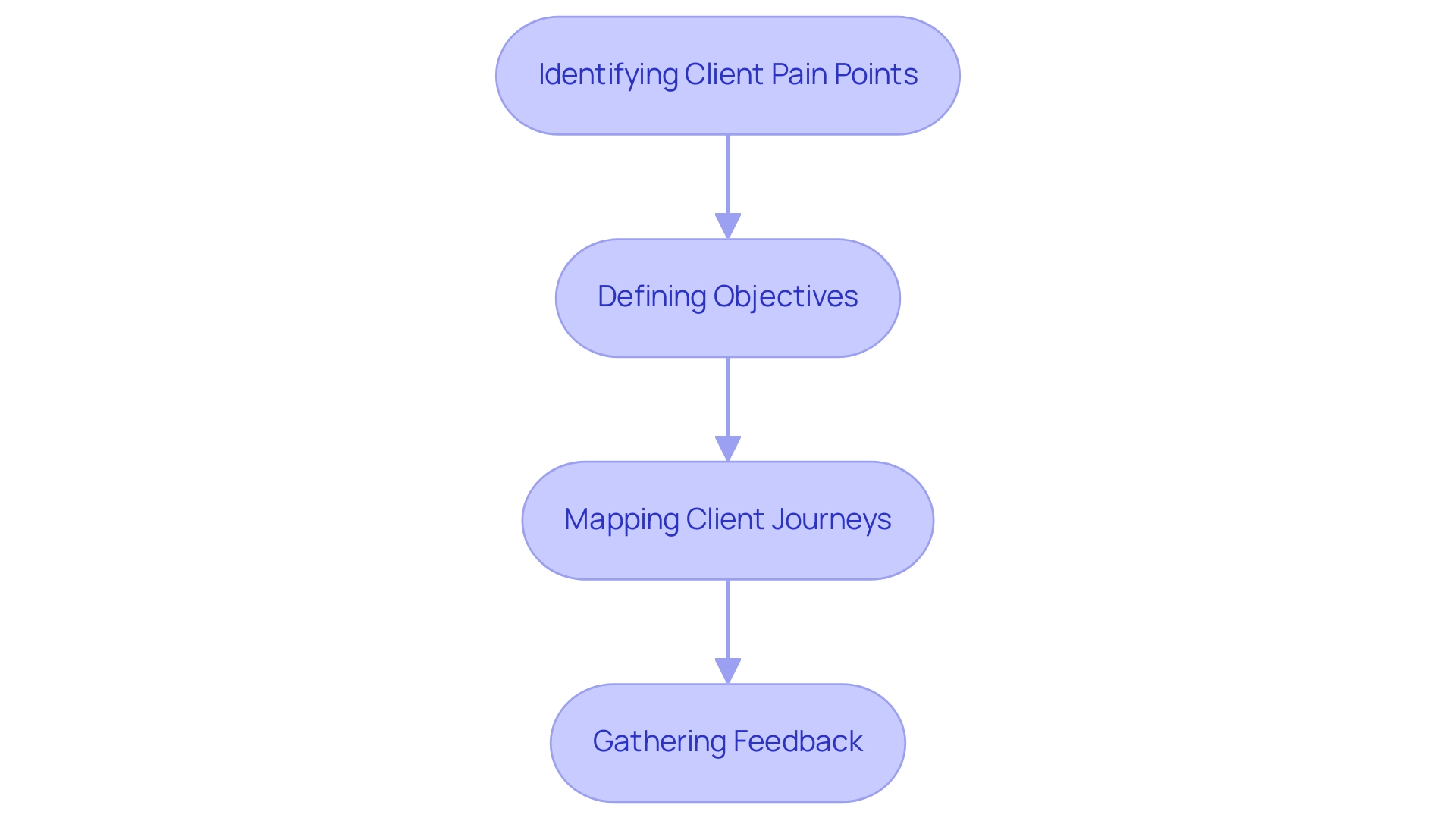
Exploring different types of Customer Experience Management companies
In the ever-changing landscape of 2025, we understand that navigating Customer Experience Management (CXM) can be overwhelming for many business owners. It’s essential to know that there are several distinct categories of CXM companies, each offering unique services designed to meet your specific needs:
- Consulting firms: These are your strategic partners, providing insights and guidance to help you implement effective CXM practices. They leverage their industry expertise to assist you in optimizing your engagement strategies and aligning operations with client expectations. For example, OnRamp focuses on creating seamless onboarding processes that enhance user engagement. This not only maximizes lifetime value but also builds lasting connections, driving sustainable success.
- Technology providers: If innovation is what you seek, these companies deliver cutting-edge software solutions that automate and improve user interactions. Their offerings typically include Customer Relationship Management (CRM) systems, analytics tools, and platforms for real-time communication, making your interactions smoother and more efficient.
- Full-service agencies: These agencies take a comprehensive approach to managing experience strategies, covering marketing, service, and feedback collection. Their holistic methods ensure that you can create cohesive interactions across all touchpoints—an increasingly vital necessity as consumers engage through an average of six channels during their purchasing decisions.
- Niche providers: Specialized firms focus on specific aspects of CXM, such as customer feedback mechanisms or journey mapping software. While they may not offer the breadth of services found in full-service agencies, their deep focus allows you to tackle particular challenges effectively.
As highlighted by Zendesk Benchmark data, over 50% of consumers will switch brands after just one negative experience. This statistic underscores the critical importance of choosing the right CXM provider. Sam Walton once said, “There is only one boss. The client. And he can fire everybody in the company from the chairman on down, simply by spending his money somewhere else.” This powerful quote reinforces the necessity of a customer-centric approach in CXM.
Therefore, it’s crucial for you to assess your needs carefully and consider how each type of CXM company can support your objectives and enhance client satisfaction. Don’t hesitate to test out these companies, taking the next step towards improving your customer experience can lead to meaningful results.
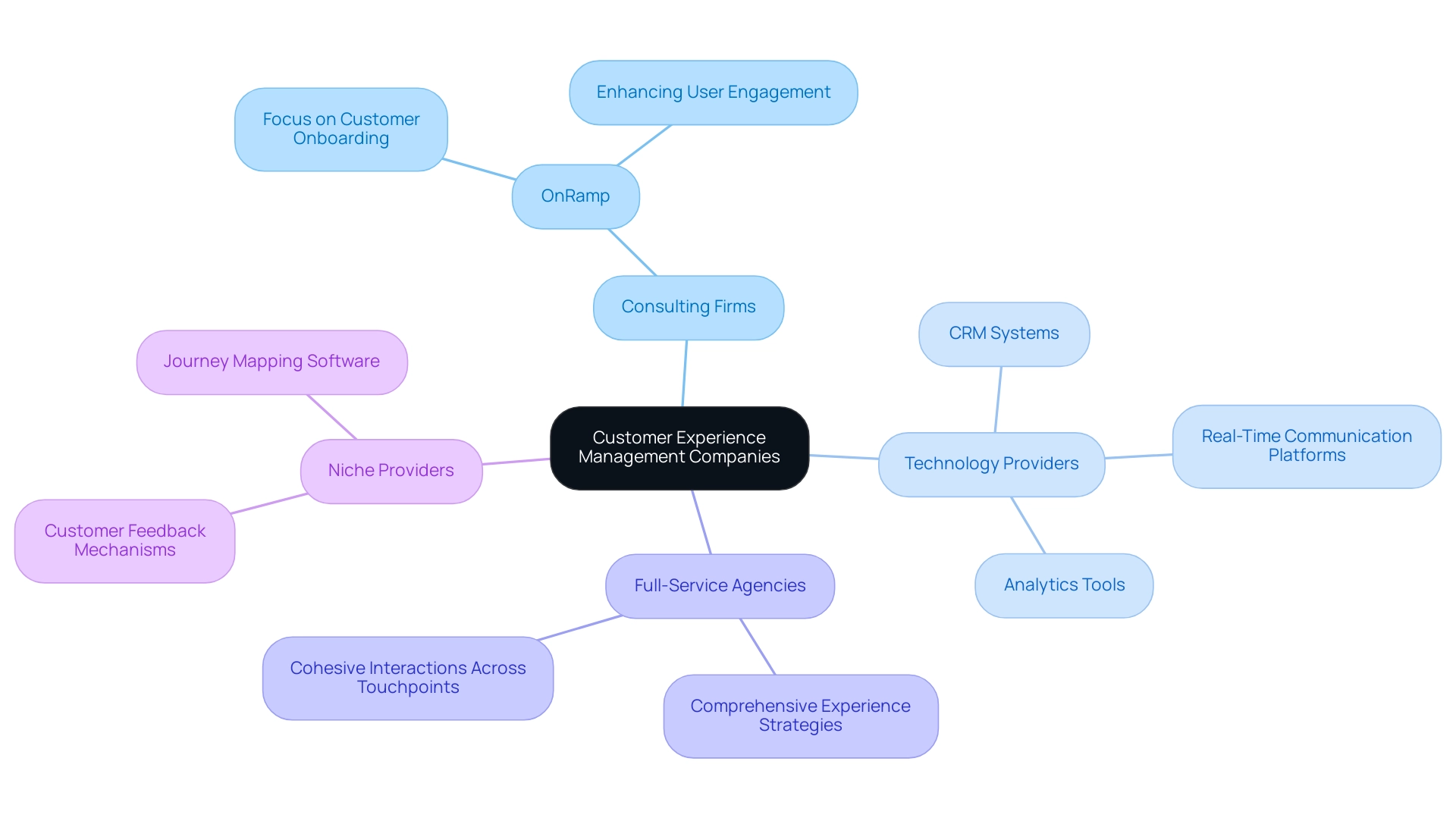
Key factors to consider when choosing a CXM provider
When choosing customer experience management companies, we understand that businesses face several critical factors that can make or break a partnership. Technology compatibility is crucial; it’s vital to ensure that the provider’s technology integrates seamlessly with your existing systems. Effective integration not only streamlines operations but also enhances the overall experience, allowing AI solutions to function efficiently.
Take Dashly, for example. It offers AI-driven omnichannel communication, which simplifies the management of customer communication across various channels, boosting operational efficiency. In fact, 58% of companies identify change management as a significant barrier to AI implementation, underscoring the importance of selecting a provider who can ease this transition.
Next, consider scalability. As your interactions grow, your chosen solution should scale with you. Adaptable solutions, like Dashly’s shared inbox, effectively manage user queries and empower support agents to respond swiftly while maintaining conversation context. This adaptability is especially vital for small to medium-sized enterprises (SMEs) aiming to handle increased engagement.
Customization is another key factor. Providers that offer tailored solutions can better address specific business needs. For instance, Dashly’s ability to develop a knowledge base and utilize an AI support bot for self-service assistance demonstrates how flexibility can lead to improved interactions and customer satisfaction.
Don’t overlook support and training. Assessing the level of client support and training available is essential. Comprehensive training and ongoing support make for successful implementation and usage of the CXM system, ultimately leading to higher satisfaction rates. Dashly empowers organizations by automating routine tasks and providing performance analytics, enhancing the effectiveness of support agents.
Lastly, consider the reputation and reviews of potential providers. Researching a provider’s track record and gathering client feedback is vital for gauging reliability and effectiveness. A strong reputation often reflects a provider’s ability to deliver on promises and adapt to client needs.
For example, a case study titled ‘Seamless Integration of AI with Existing Systems’ highlights how effective compatibility assessments are crucial for successful AI implementation. By thoroughly evaluating these elements and exploring options like Dashly, companies can identify customer experience management partners that align with their strategic objectives, laying a solid foundation for improving client interactions and fostering growth. Notably, Dashly clients have reported a 50% reduction in calls and emails after implementing live chat, showcasing the transformative potential of effective service management.
As Luisa Goncalves expressed, ‘Through electric car, I decreased my carbon footprint significantly… 300 kg in one year. It is amazing! ’ This sentiment captures the profound impact that enhanced client experience management can have on overall organizational success.
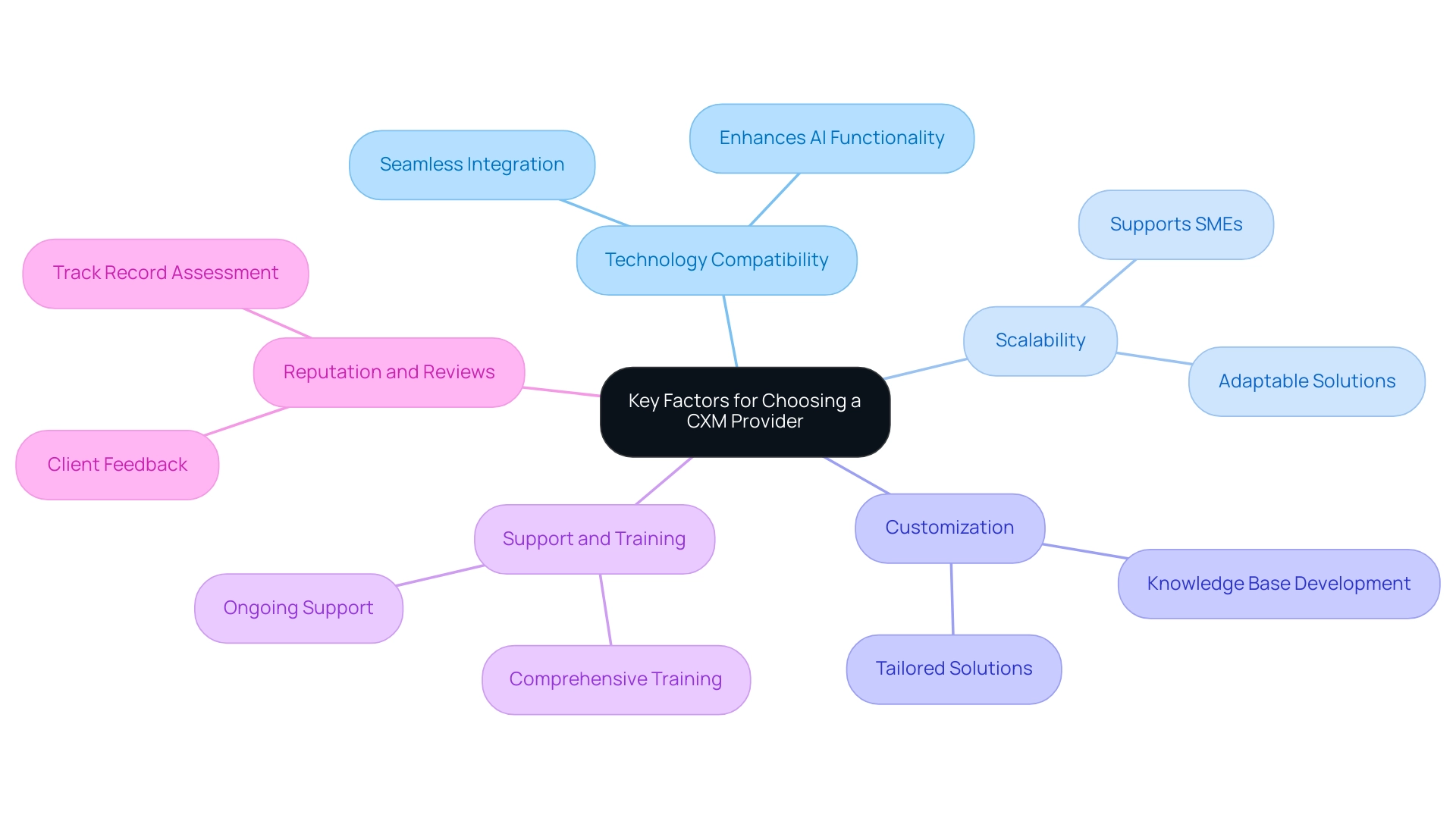
Enhance your customer experience with Dashly:
Assessing your business needs for effective Customer Experience Management
For successful customer experience management, it’s essential for businesses to start by assessing their unique needs. This vital step involves understanding how these management companies can enhance service quality.
- Identifying client pain points: We understand the specific challenges clients face during their interactions. It’s crucial to pinpoint these pain points.
Notably, 43% of clients report poor service experiences as a major source of dissatisfaction, highlighting the urgency of addressing these concerns. This aligns with the principle of empathy, which underscores the importance of understanding client feelings and experiences.
- Defining objectives: Establishing clear goals is essential for what your organization aims to achieve with customer experience management, whether that’s enhancing client satisfaction or boosting retention rates.
Companies that prioritize personalization see a remarkable 40% increase in revenue compared to their slower-growing counterparts, illustrating the tangible benefits of setting ambitious objectives. This insight from McKinsey & Company emphasizes how personalization drives business success.
- Mapping client journeys: A thorough analysis of the client journey is necessary to identify key touchpoints and opportunities for improvement.
This mapping offers a strategic overview of where enhancements can be made to elevate user satisfaction, reinforcing the principle of excellence in service delivery.
- Gathering feedback: Utilizing real-time client feedback mechanisms—like surveys and social media insights — allows organizations to gain invaluable insights into client experiences and expectations.
This practice not only identifies strengths and areas for improvement but also fosters a culture of responsiveness and adaptability, further supporting personalization.
By conducting a comprehensive assessment, customer experience management companies can tailor their strategies to effectively meet client needs, driving engagement and satisfaction.

Leveraging technology: The role of automation and AI in CXM
Technology is transforming how customer experience management companies approach their strategies, and we understand how overwhelming that can feel. Automation can be a game changer. By automating routine tasks like client inquiries and feedback collection, businesses can significantly improve response times and operational efficiency. This shift not only streamlines processes but also allows teams to focus on the more complex needs of their clients, ultimately leading to greater satisfaction.
Investing in customer experience management is crucial for businesses striving to maintain their reputation and success, as it directly influences client perceptions and loyalty. AI and Machine Learning are here to help. These advanced technologies personalize client interactions by analyzing vast amounts of data, allowing businesses to predict consumer behavior and preferences accurately. This means you can tailor your offerings to meet your clients’ needs more effectively.
As noted by service specialist Shep Hyken, over 62% of consumers seek economic value from personalized interactions — whether that’s saving money, receiving something for free, or feeling they’re paying a fair price for products or services. This statistic underscores the importance of personalization in building loyalty and increasing revenue. In fact, faster-growing companies generate 40% more revenue from personalized interactions compared to their slower-growing counterparts, showcasing the financial benefits of effective CX strategies.
Omnichannel integration is another key area. Today’s clients expect seamless communication across various platforms. Technology makes this omnichannel approach possible, ensuring that interactions remain consistent and relevant, no matter the channel. This capability is vital for delivering a cohesive brand experience and meeting client expectations.
Analytics tools are indispensable for understanding consumer behaviors and preferences. By leveraging these insights, customer experience management companies can make informed decisions to enhance their CXM strategies. A case study titled ‘Employee Engagement and Its Impact on Client Interaction’ reveals that employee engagement and the tools they utilize significantly influence client satisfaction.
Many employees feel more motivated when their organization emphasizes customer experience, which in turn improves client interactions. By effectively harnessing these technologies, companies can create engaging and efficient client experiences, setting the foundation for sustained growth and success in an increasingly competitive landscape.
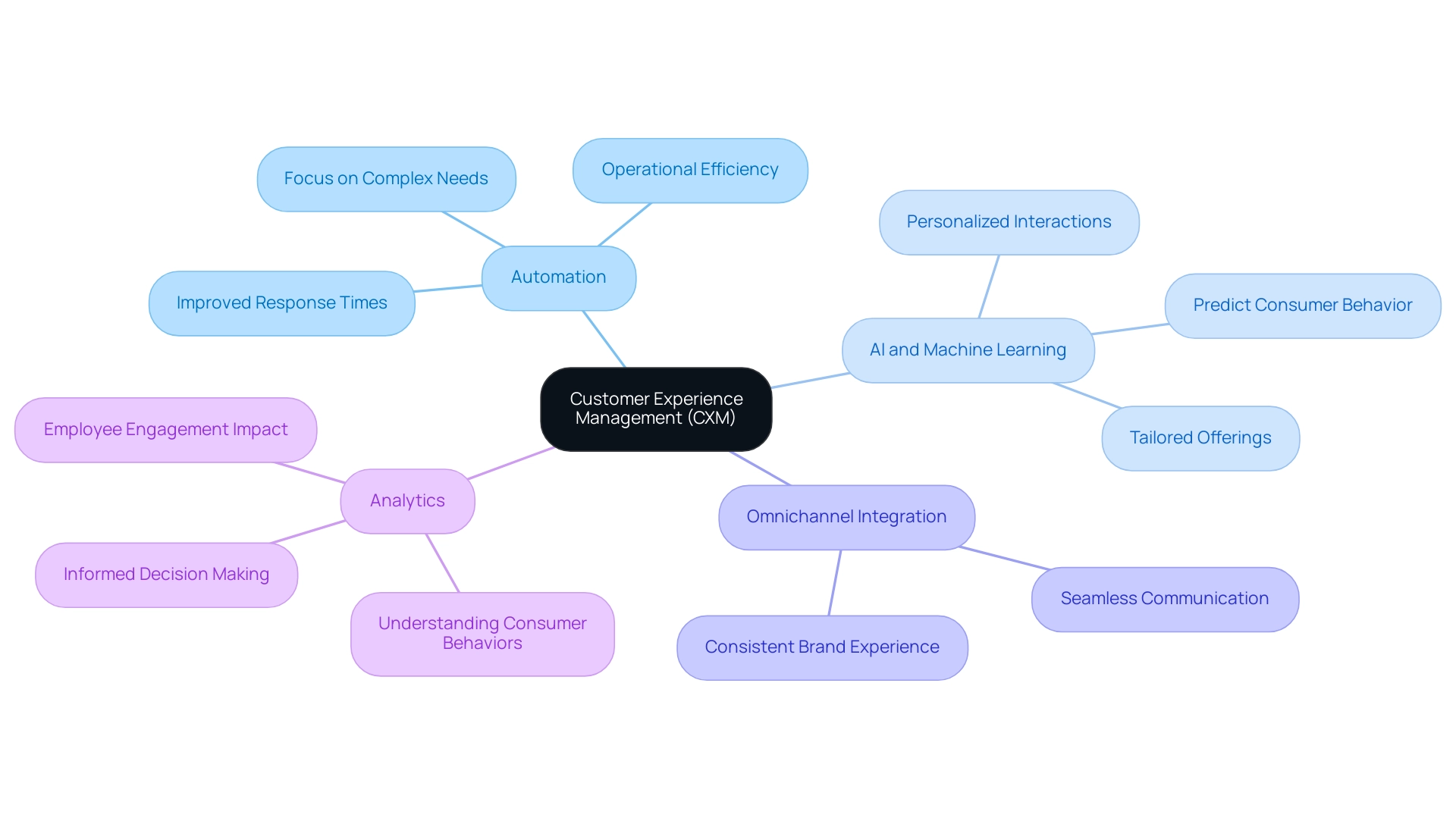
Enhance your customer experience with Dashly:
Continuous improvement: Adapting your CXM strategy for long-term success
Achieving long-term success in customer experience management can feel overwhelming, but it doesn’t have to be. A steadfast commitment to continuous improvement, especially through Dashly‘s omnichannel communication and automation tools, can make all the difference. Let’s explore how you can simplify these challenges.
- Regularly reviewing performance metrics: Understanding your key performance indicators (KPIs) is essential. By analyzing these metrics, you can pinpoint what’s working and what needs a little tweak. Dashly’s analytics provide a comprehensive view of your performance across channels, helping you stay on track.
- Soliciting feedback: Are you listening to your customers? Gathering feedback is crucial to staying in tune with their evolving needs and preferences. With 63% of consumers expecting companies to act on their feedback, those who prioritize this can better align their services with client expectations. Dashly’s unified communication approach captures interactions across multiple channels, ensuring that feedback is effectively integrated into your service improvements.
- Adapting strategies: Flexibility is key. You need to be ready to pivot and enhance your strategies based on insights from performance reviews and client feedback. This adaptability can lead to improved client satisfaction and loyalty, especially with Dashly’s efficient management of support inquiries through automated systems and AI-driven responses. Features like saved replies and chat routing help your support teams respond more efficiently.
- Investing in training: Your team is your greatest asset. Ensuring they are well-trained on the latest CXM tools and techniques is vital for delivering exceptional client experiences. With 44.5% of service professionals planning to scale operations through AI and automation, investing in training becomes even more critical as technology evolves. Dashly equips your support teams with tools, including note-taking features, to handle user queries effectively, reducing agent workload and enhancing service delivery.
Integrating these practices not only fosters a culture of ongoing improvement but also strengthens the efforts of customer experience management companies, ultimately leading to lasting relationships with clients. For instance, WPManageNinja’s incorporation of AI into their support system resulted in 96% of clients viewing service as a key factor in brand loyalty. By enhancing their support team’s efficiency with Dashly’s tools, including the AI support bot that manages up to 40% of user queries, they improved responsiveness and reduced agent burnout.
The stakes are high; more than 50% of consumers have cut back on spending after a single negative experience, leading to a staggering global loss of $4.7 trillion. Therefore, refining your CXM strategies through ongoing assessment and adaptation, supported by Dashly’s innovative solutions, is not just important — it’s essential.
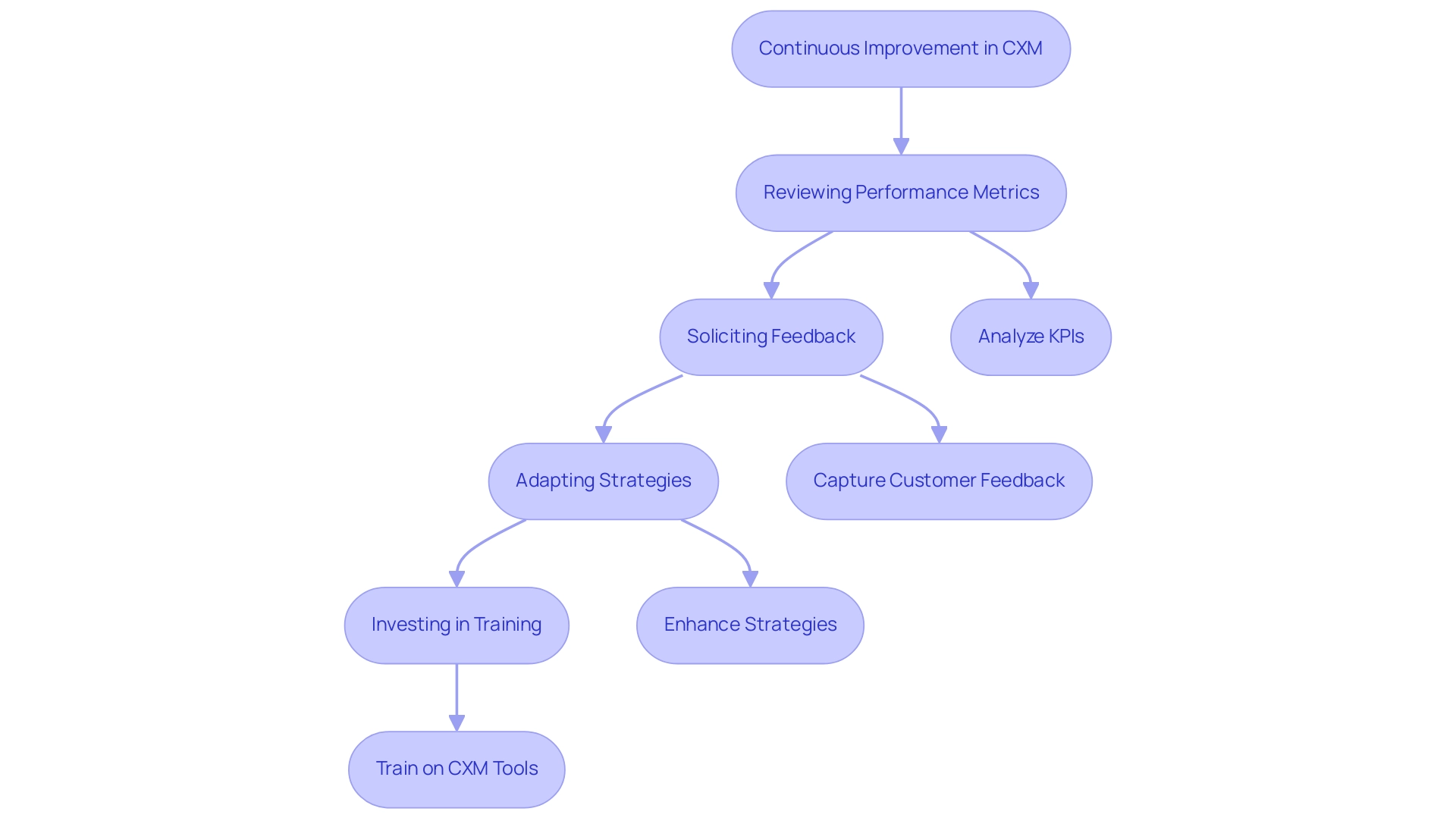
Conclusion
Navigating the complexities of Customer Experience Management (CXM) is essential in today’s competitive business landscape. We understand that small business owners face real challenges, from selecting the right provider to effectively leveraging technology. By focusing on these components, you can enhance customer satisfaction, loyalty, and advocacy. The statistics show that a well-implemented CXM strategy not only meets evolving customer expectations but also drives significant revenue growth, underscoring the importance of prioritizing customer experiences.
Continuous improvement in CXM is crucial. Regularly assessing performance metrics, gathering customer feedback, and adapting strategies are vital for nurturing long-term relationships with your customers. Integrating advanced technologies like automation and AI can further enhance your CXM initiatives, enabling you to respond swiftly and efficiently to customer needs.
As we look ahead to the dynamic marketplace of 2025, embracing a robust CXM framework is not just an option—it’s imperative for sustainable success. By committing to ongoing enhancement of customer interactions, you can build stronger connections, ensuring that you not only meet but exceed customer expectations in an ever-evolving environment. Remember, you’re not alone in this journey; taking these steps can lead to meaningful improvements for your business.





